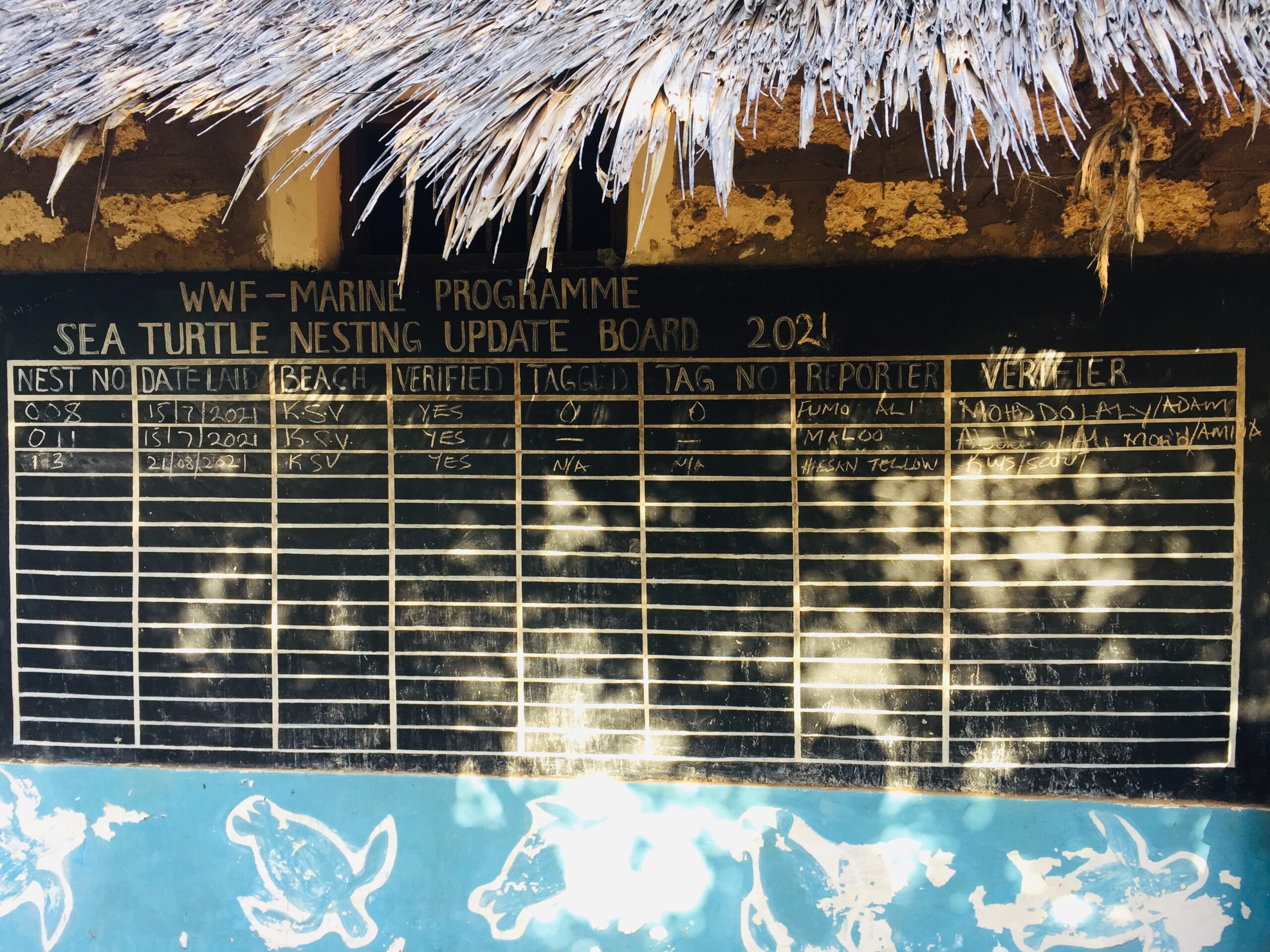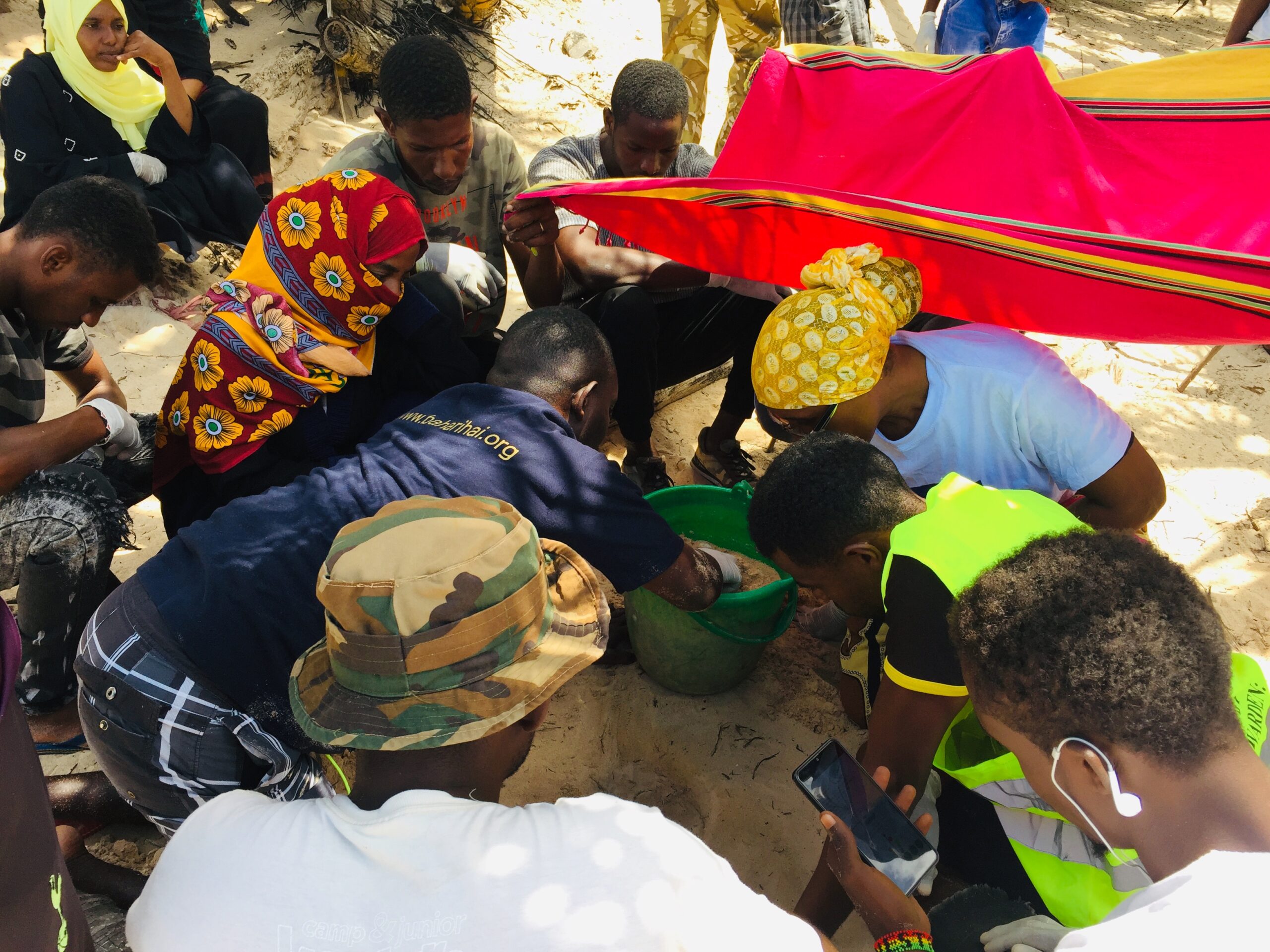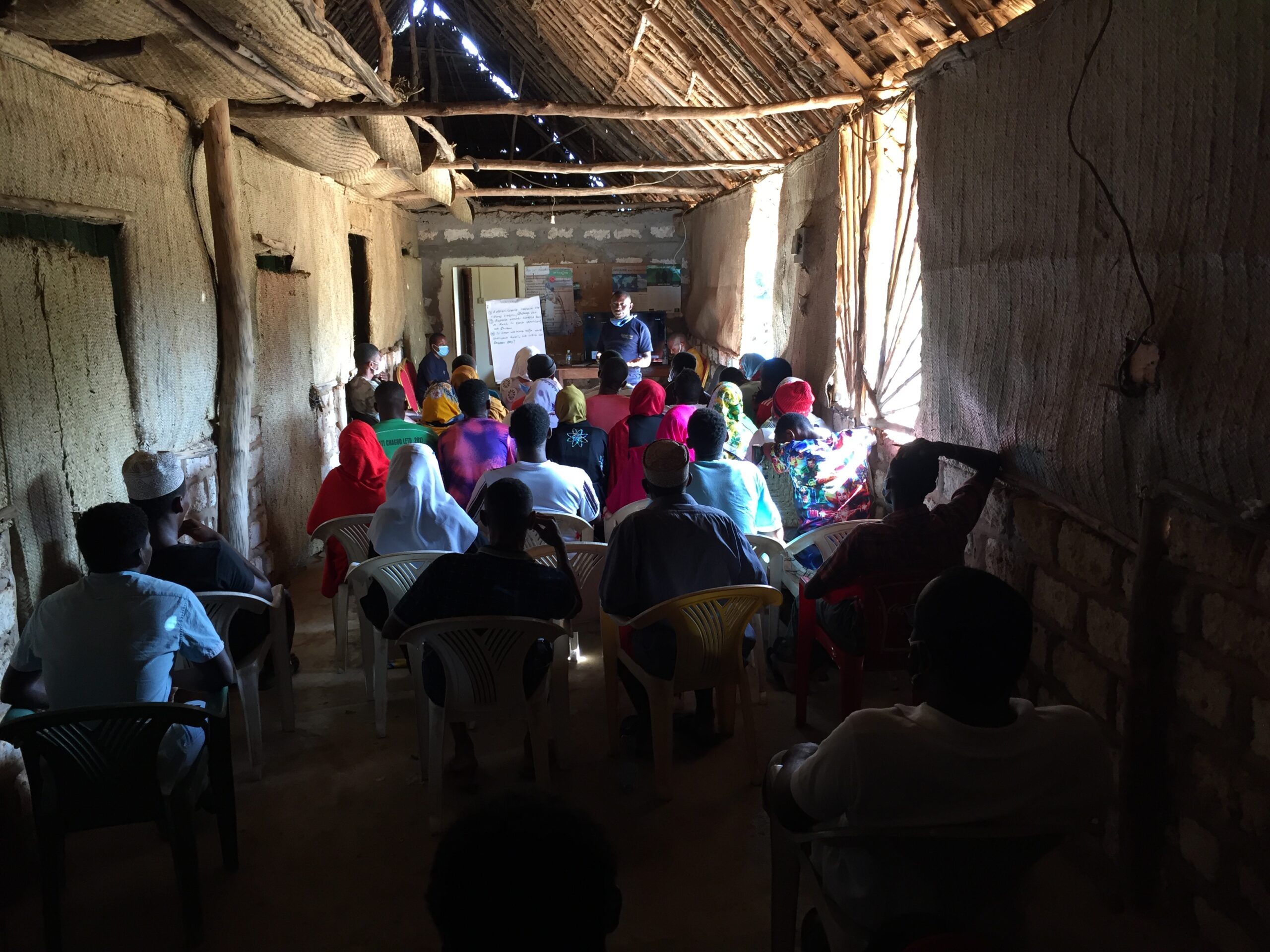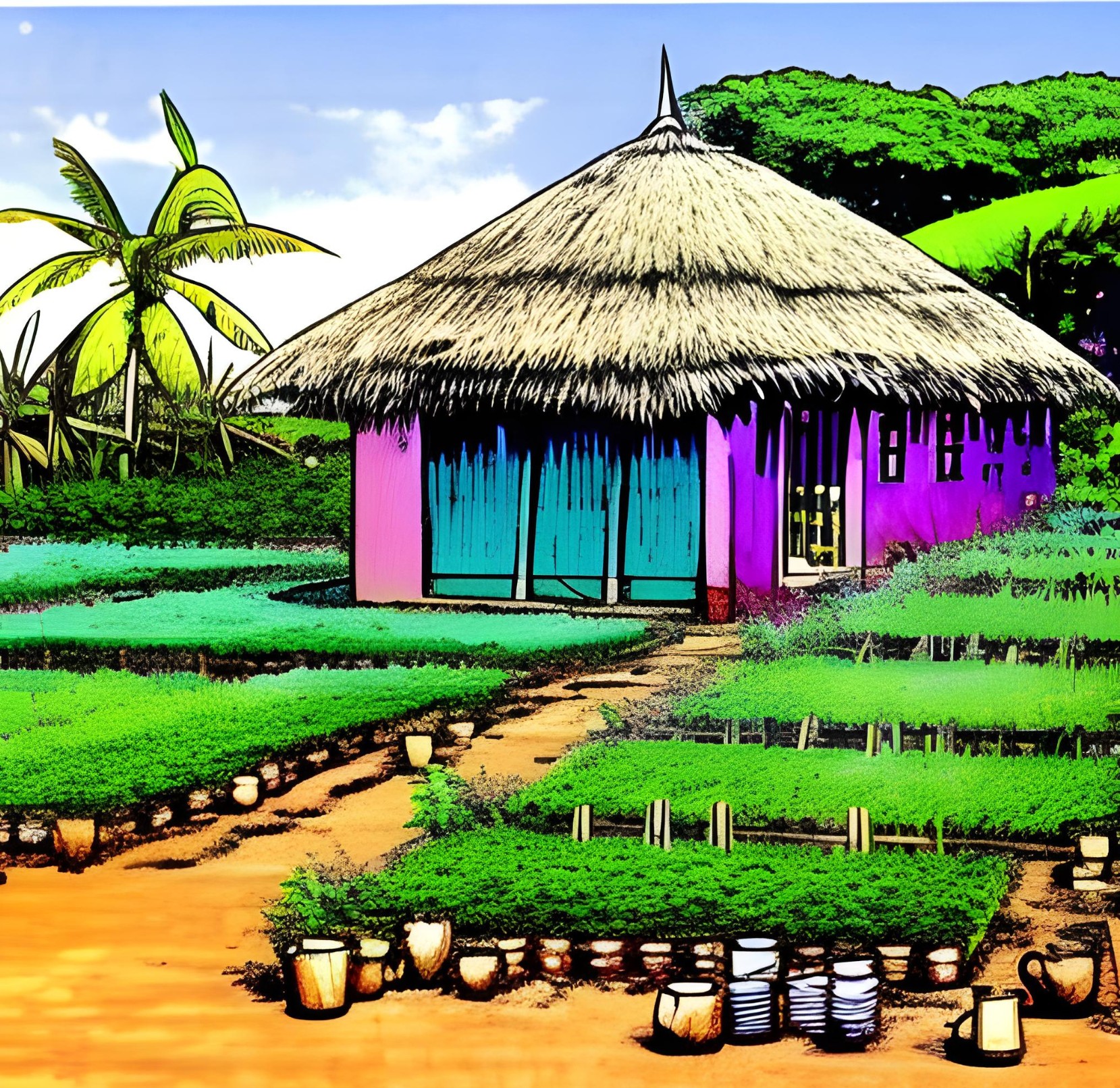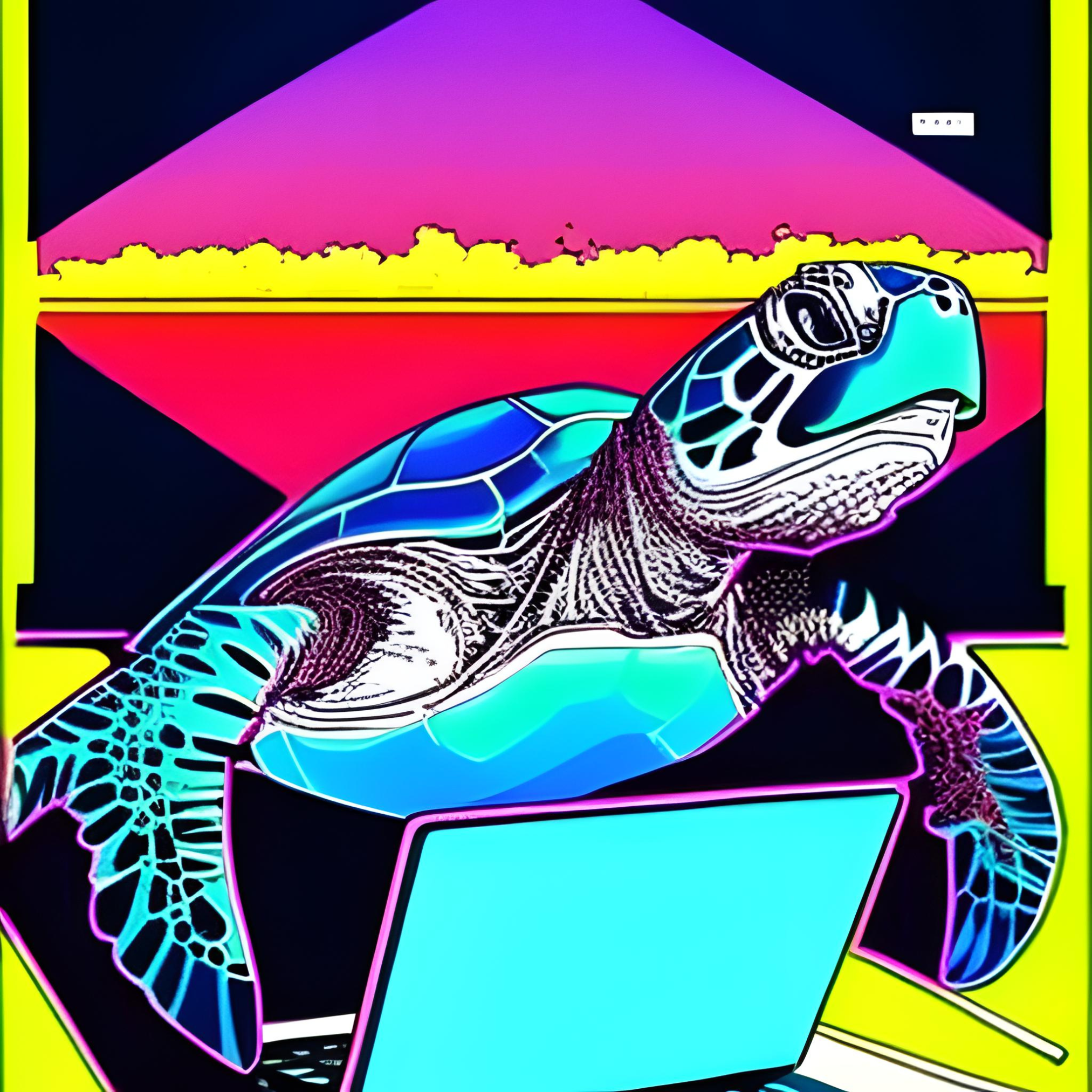Transferring our skills up North
Bahari Hai’s first sea turtle training programme conducted.
A request by Kenya Wildlife Service (KWS) and Fauna & Flora International, we were taken way up North to Mkokoni village (Lamu). This village is blessed with numerous sea turtle nesting beaches and foraging grounds to the west in Kiunga Marine Reserve.
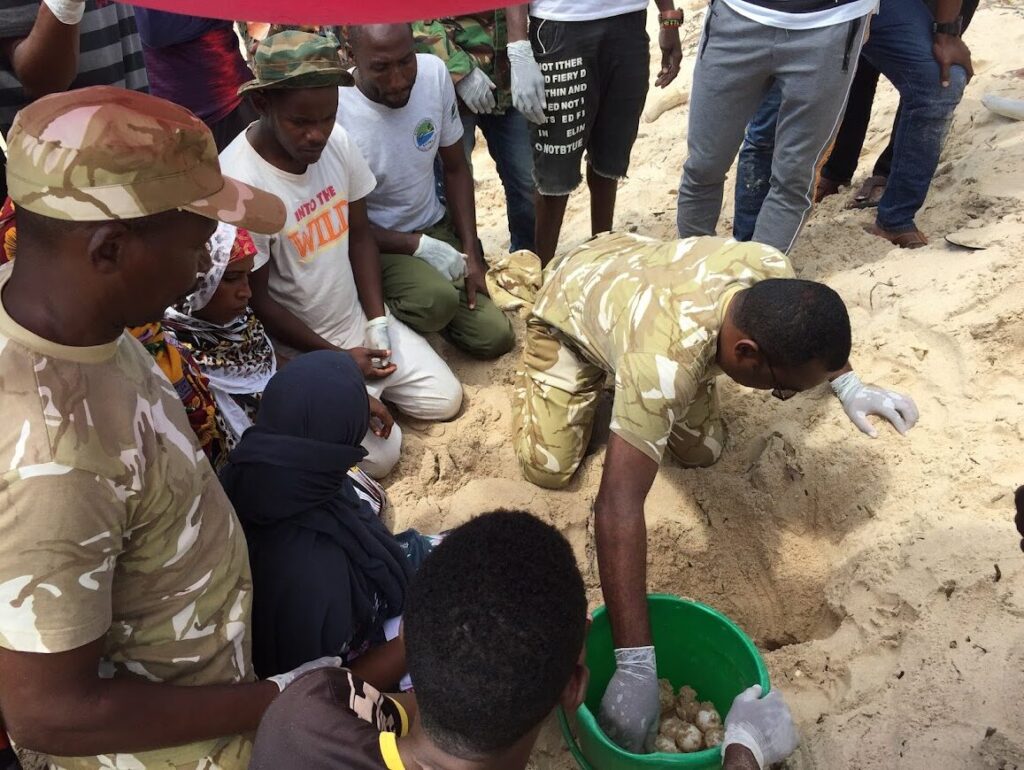
The local KTCG (Kiunga Turtle Conservation Group) is mostly comprised of the Bajuni people. Turtle nest activities such as beach patrols are usually conducted in the morning. Whenever there is a turtle incident or report, KWS is notified. Unfortunately, the quality of data collection has gone down in recent years. In the past, as many as 150 nests are monitored annually, this year only 47 nests had been monitored so far.
Our trip made it very clear that there is a large knowledge gap when it comes to sea turtle conservation. It is evident that further in-depth training is required to bring the most active turtle conservationists in the area up to best practice standards.
However, enthusiasm prevailed. We were pleasantly surprised to see so many highly dedicated women. Including a pregnant mother patrolling! Still an exception in sea turtle conservation along the Kenyan coast. The Bajuni are historically infamous for eating turtles, but these women are working to change that!
The group of 54 trainees produced a shortlist of around 32 highly committed people who will undergo further training. Topics covered were: beach patrolling; nesting turtle handling; turtle tagging; nest locating, marking and translocation; nest exhumation and correct sea turtle data collection. Training was both theoretical as well as practical.
A detailed report was compiled for the organizations who commissioned the training and the feedback to Bahari Hai from the trainees and key stakeholders was very positive. All parties look forward to improving collaboration efforts in the future.
We too learnt a lot from the experience which we will incorporate into future training sessions as we all work towards a brighter future for sea turtles and our marine environment.
